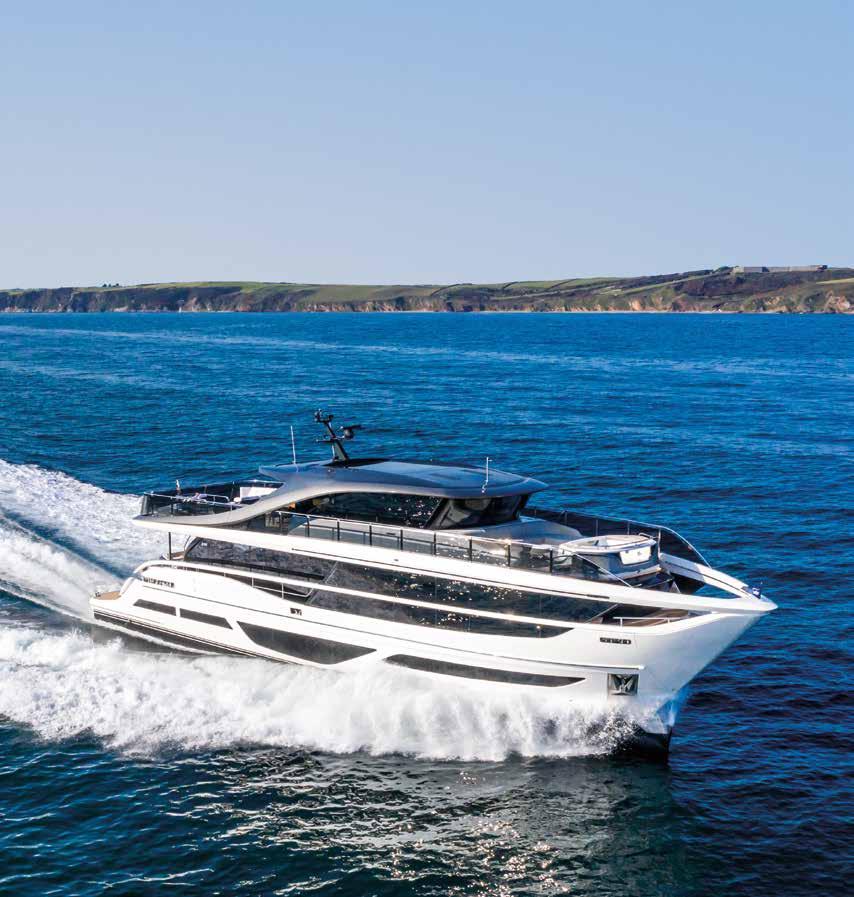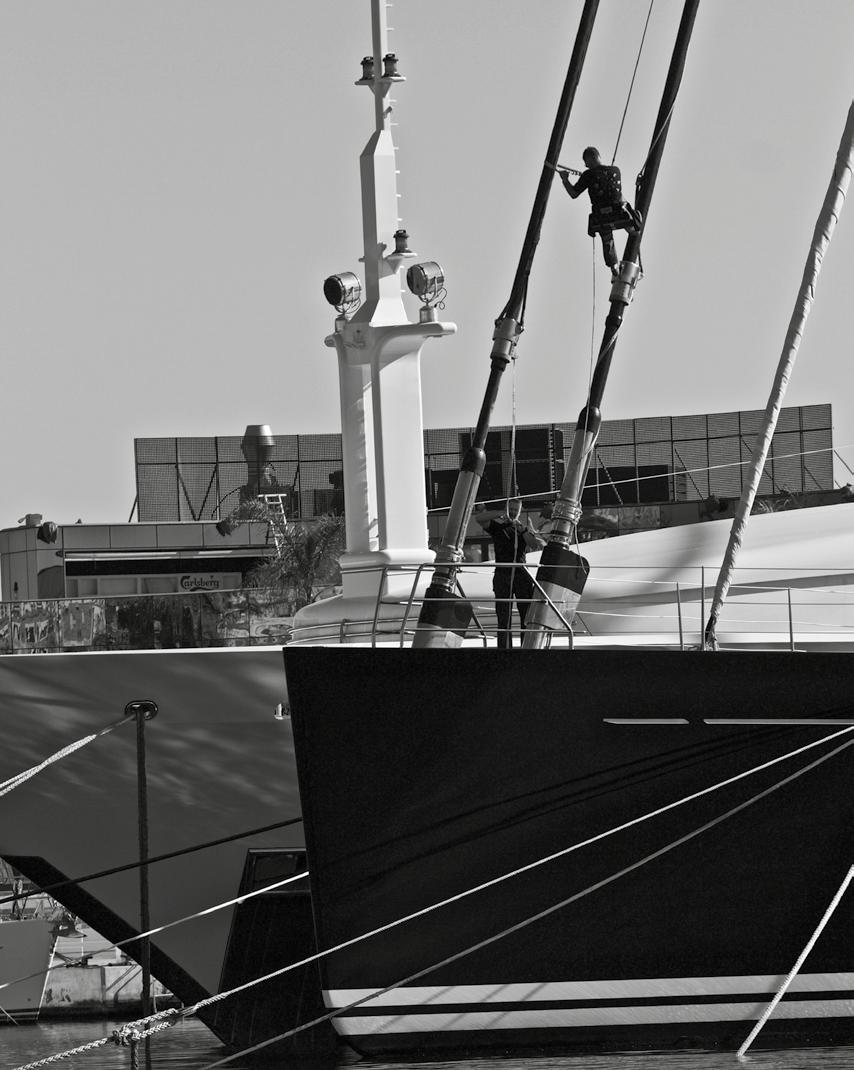
10 minute read
Don’t get caught up in the blame game
Guest Column with Sarah Allan
Sarah Allan, partner at Penningtons Manches Cooper, outlines the steps yacht brokers can take to protect themselves from liability during contractual disputes.
Guest Column with Sarah Allan
It’s with relief that we return to a new normal as countries in yachting hubs are more readily opening their borders. Meanwhile, yacht brokers have sat in the middle of a firestorm. The number of charter cancellations and contractual renegotiations due to Covid was unprecedented. Clients looked to their brokers for assistance.
Quite often, solutions were found that accommodated both parties’ interests, thereby avoiding arbitration. However, under pressure, brokers could have unintentionally exceeded their authority or acted inconsistently with their principal’s interests. Where contractual provisions might not benefit a party, a broker will want to avoid any blame, and it’s worth reflecting on how they can protect themselves in these circumstances.
To do this, one really must go back to basic principles. An agent may have the authority to act on behalf of a principal, and this is often recorded in a written contract such as a central agency agreement. Alternatively, they may have apparent authority where the principal relates to the other party that an agent has jurisdiction to contract on their behalf. Ideally, the scope of that authority should be agreed, but implicitly it covers the services incidental to carrying out the principal’s instructions.
Under English law, a broker is obliged to exercise reasonable care and skill in providing its services. They also must not act beyond the limits of their actual authority. A broker may (subject to any exceptions in their contract) be liable for damages directly caused by any breach of their duties, which include any applicable industry code of conduct and fiduciary duties.
Brokers may not have the authority to conclude a contract without reference back to the principal. Under MYBA contracts, the actual contracting party will usually sign the agreement. This avoids any allegation that the broker acted beyond the scope of their actual authority in concluding a contract, and the principal is on notice of the contract terms.
Importantly, under English law, precontractual negotiations are rarely admissible in construing any contract. This contrasts with a situation where no formal contract is agreed, and one must review both the parties’ conduct and correspondence to ascertain what was agreed.
The Covid pandemic was a novel situation and the legal issues were more complex in cases where countries adopted different regulations. Brokers handling negotiations were often committing their clients to new contractual obligations and therefore had to tread carefully. For instance, did a party have a right to cancel or had they inadvertently waived that right because of a broker’s equivocal or ambiguous response? Did the broker have authority to bind the principal to a new agreement? Were the terms of the new agreement fit for purpose or did they in any way jeopardise the principal’s rights?
Inevitably, these issues only came to light as the renegotiated contracts, often incorporating some form of Covid addendum, were scrutinised when the ‘rescheduled’ obligations arose.
What can a yacht broker do to protect their position? As a starting point, yacht brokers providing any service should have a written agreement with their principal, clearly setting out the scope of their authority, remuneration and limitations of liability. Equally, where a subbroker is engaged, the brokers should have a separate agreement between themselves, thereby also avoiding potential disputes over commission arrangements.
Who the broker is acting for may be obvious where a seller or owner engages a broker and pays commission to that broker. The position can be unclear in cases where a broker deals with both parties. A charterer or buyer may incorrectly conclude that the broker is looking after their interests. Brokers should seek to be open about this with the parties, particularly where a dispute is likely.
While it’s commendable to keep a contract alive by negotiation, principals should be consulted on their options and told they can seek independent legal advice. This isn’t to say that yacht brokers can’t play an important role in helping parties to resolve their differences rather than resorting to arbitration. Expressing a commercial and unqualified view on the likely outcome of a dispute can be instrumental in broking a compromise.
A broker may also be appointed as stakeholder but those obligations are distinct. In the event of a dispute, a separate department should ideally handle such matters. If a stakeholder comes under pressure to release a deposit where there is a dispute but arbitration has not been commenced, legal advice should be sought. If the contract is subject to English law and jurisdiction, a stakeholder may be able to apply to the court to give directions as to which party the broker should pay the deposit.
If a dispute can’t be resolved then legal process will have to be commenced. In such cases, the broker may be obliged to disclose all relevant documents. Yacht brokers should therefore maintain a complete file of all electronic correspondence, including text and WhatsApp messages, and should also keep a record of all telephone attendances and meetings. In the event of a cancelled charter this would prove the broker exercised best endeavours to mitigate the loss if a replacement charter could not be found.
In conclusion, if a yacht broker has any doubt as to the scope of their authority or instructions, they should seek clarification before committing their principal. This is of utmost importance when unforeseen situations arise and brokers are asked to assist. SA
THE ALL-NEW PRINCESS X95
EXPERIENCE THE EXCEPTIONAL®

Water Revolution Foundation column
with Bram Jongepier

The birth of the real-life YETI
Bram Jongepier, chair of the Yacht Environmental Transparency Index project, explains how his 3am brainwave triggered serious progress towards more environmentally friendly yachting.
It started with a Christmas card in 2018 that I’d sent to my peers in the yachting industry with the request to help me find the YETI: the Yacht Environmental Transparency Index. I received very enthusiastic reactions so we hosted a meeting in March 2019 at our FeadshipDe Voogt offices to discuss this idea, and this resulted in exciting progress and significant milestones over the past two years.
At this meeting, I shared the challenges I face as a designer to showcase to our clients how much better a new concept design we had created would be compared to the status quo. Great concepts mostly end up being judged by their economic cost alone, and unfortunately there was no reference for the ecological side that could indicate the benefits versus costs and as such to make a more informed decision. The yachting sector didn’t have a standardised way of comparing yachts on their environmental credentials. The invited industry peers faced the same challenges.
My brainwave at 3am one night in November 2018 turned into an official Joint Industry Project through the new collaborative platform Water Revolution Foundation.
The way forward No less than 11 leading yacht builders, four renowned naval architecture firms, a large refit yard and three Dutch knowledge and research institutes signed up to take on this challenge. The group represents more than 40 per cent of the market share and I’m very proud to be the initiator and chair of this project. We all understand that if we don’t do this, IMO will wake up one day and force the general IMO EEDI system upon yachts. Obviously, then it will be too late to propose an alternative for yachts. This project is to develop a scientific, sound and robust tool on which we subsequently can base a new competitive arena to deliver the environmental friendliest yacht.
Transparency Ambitiously, we ‘set sail’ to develop a rating system that was ultimately able to reward clients, designers and shipyards for the efforts put into the project and choices made to make a better yacht. A yacht that provides the same (or an even better) experience to clients by using fewer resources. The tool needed to also showcase why a yacht is better. The T in YETI stands for transparency, a vital aspect and highly valued throughout the YETI development. Reduced environmental impact can be achieved through good naval architecture, system energy savings or additional technical features in the power-supply system.
Scope YETI 1.0 YETI is based on the Life Cycle Assessment (LCA) methodology which includes the build, operation and end-of-life/refit. The scope of YETI 1.0 is focusing on the operational phase of the yachts and more specifically on the energy they use. This is split up into energy for propulsion and hotel function. By combining all yachts in one scope, we can truly compare them with one another on their environmental credentials. This means full- and semidisplacement yachts, fast yachts and sailing yachts, with most common powering systems such as diesel direct, diesel electric and hybrids.
Each yacht is unique … but their use is similar There are very big differences in size, type and execution in yachting, so the method needed to be inclusive, while also being sensitive to unique characteristics. From the outset, YETI had to be realistic. Our task was to develop an average operational profile that reflects the reality of current superyacht use.
A large quantity of AIS data (automatic identification system, compulsory on all large yachts) was analysed. Out of almost 300 years of operational data from 109 yachts, a standardised, parametric operational profile was determined with time and speed distribution, where speed was found to be related to waterline length. Yes, there are exceptions, but on average yachts tend to spend little time at speed (only 10 per cent) and most of their time in harbour (56 per cent) and at anchor (34 per cent). The use of an operational profile is the main difference from the EEDI approach, developed for
ships by IMO, which looks only at a single sailing condition.
Hotel function, however, is always on, also when in harbour with no guests on board. Yachts connect to shore power or run on generators. The shore power supply has been counted for by taking into account the average energy grid in popular yacht marinas. You’ll see that we haven’t left any stone unturned and have created a very sound YETI methodology.
Existing fleet What about your current yacht? YETI does not only focus on new builds. In fact, we have a collective responsibility for the existing fleet of yachts. The same YETI approach works for comparing existing yachts to the fleet benchmark to determine its YETI score. Water Revolution Foundation aims to provide concrete solutions for yachts to be upgraded through refit should their owners wish to do so.
We can only do it right and together I hope our YETI development inspires you and that it proves our industry is working together to seriously progress towards environmentally friendlier yachting. We all feel a pressing need to make sure future owners of superyachts can still have fun without having unsustainable impact on our environment.
As I write this column, the YETI group is conducting the fleet review to test the YETI 1.0 calculator – an incredible milestone. Still, much work needs to be done before we launch in November at The Superyacht Forum in Amsterdam. You’re most welcome to include your yacht in our YETI test fleet.
I want to thank Feadship for granting me the significant time to put into the YETI project and, of course, my fellow YETI developers at Abeking & Rasmussen, Baglietto, Benetti, Damen Yachting, De Voogt Naval Architects, Delft University of Technology, Dykstra Naval Architects, Fincantieri Yachts, Heesen Yachts, Lateral, Lürssen Yachts, MARIN, MB92, Oceanco, Royal Huisman, Sanlorenzo, TNO and Vitruvius. Together, we’ve put the YETI in the world, and I can’t wait to see it grow up! BJ
PORT TARRACO HOME OF GIANTS
GET MORE FROM YOUR MOORING

– EU port of entry – Possibility to TPA – Easy access for subcontractors – Controlled working environment – Scaffolding allowed – Parking close to the mooring










